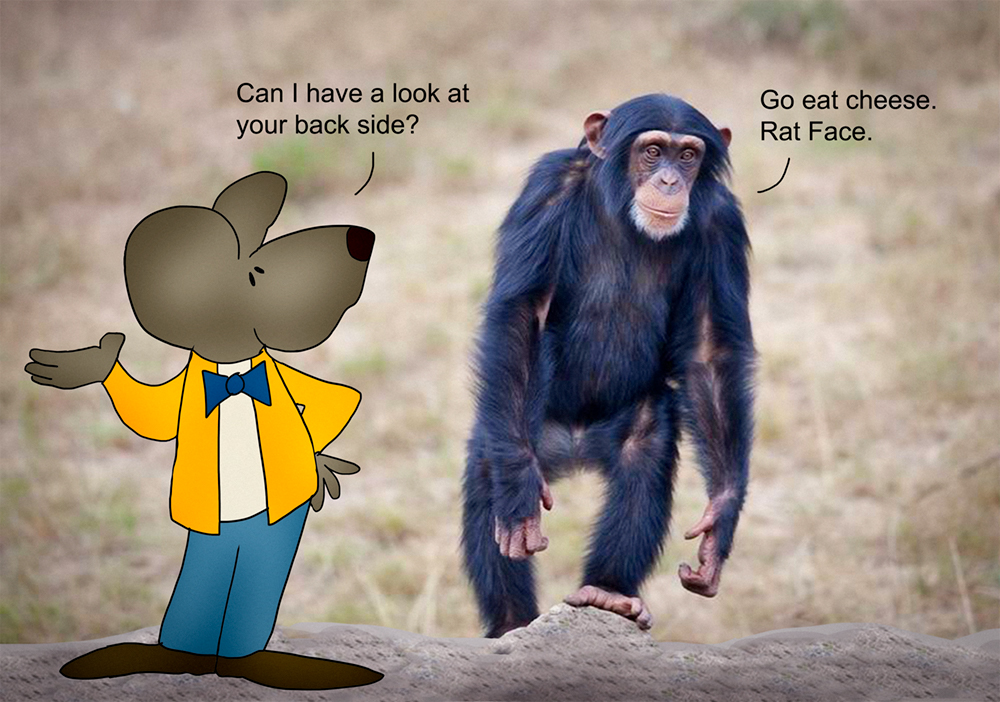What we think we know might not be what it seems.
This is true in all parts of our lives, in our world, our Universe. But it could be anything, really.
Take this for example. Of course, Hyenas don’t really laugh. It just sounds like that to our human ears. But it is a common misconception. In fact, Spotted hyenas make a whole big bunch of different vocalizations. But they are not stand-up comedians, hanging out over the dead carcass, telling jokes. The “laughter” noise they are known for, is really a series of short giggle-like sounds. And the hyenas make these noises when they are feeling somehow threatened or if they are under attack. No laughing matter, either way.
Another good for instance is bird poop. Just after you wash the car, a nice large bird flies over and really lays a ladle-full of white stuff on your windshield. That’s actually considered to be bird “pee.” They don’t go like us, in two separate areas. In birds, both waste products are eliminated simultaneously through the cloaca. So, if you really want to insult someone, you can say, “Well you’re a real cloaca-hole.” But. Without getting all into the technicalities of the thing, the process involves uric acid, which forms a sticky white paste. And that’s the pee on our windshields. The dark part in the middle is considered the poop. But it all moved out at one time, and from one place. In case you couldn’t sleep tonight without knowing this.
Yes, we don’t know what we don’t know. Or what we think we know, simply isn’t.
Like, how many times have you been walking down the path at the zoo, passed someone, and said, “Kevin, was that an ape or a monkey?” It used to happen to me more than I’d like to admit. But here’s a trick. The quickest way to tell the difference between a monkey and an ape is by the presence or absence of a tail.
It’s true. Almost all monkeys have tails, and of course, apes do not. But if that isn’t enough for you, you might want to know that there are only a handful of ape species. And hundreds and hundreds of monkeys types running around, this way and that. A whole barrel of them. So. If the primate that passes you by is not a human, gibbon, chimpanzee, bonobo, orangutan, or gorilla — or a lemur, loris, or tarsier — then it’s a monkey.
I’ll tell you. It is sometimes difficult to know what we know for sure. There’s so much in the world that surrounds us, bumps into us, moves us.
For instance, you say you wear your heart on your sleeve? It could be worse. A shrimp has its heart in its head.
Or, perhaps you feel like you may be missing out on something? Like things are passing you by? Think of the poor snail. Its slowness aside, it can sleep for three years. Imagine the disorientation that results from that kind of a nap.
And finally, the fingerprints of a koala are just like ours. In fact, they are so indistinguishable from humans that they have — on occasion — been confused at a crime scene. This, to me, seems highly unfortunate for the koala bear, who was really just minding his own business, eating a banana, and was unduly pegged for the double-murder.
Life is full of “we don’t knows.” It can be a real jungle out there. So be careful. Try to pay attention. There might be a bird overhead, a hyena in your ear, or a bunch of monkeys around the bend.
=======
“Learning is not attained by chance, it must be sought for with ardor and attended to with diligence.” ―Abigail Adams
========
“For the things we have to learn before we can do them, we learn by doing them.”
― Aristotle, The Nicomachean Ethics
=========
“Learned we may be with another man’s learning: we can only be wise with wisdom of our own.”
― Michel de Montaigne, The Complete Essays
=========
